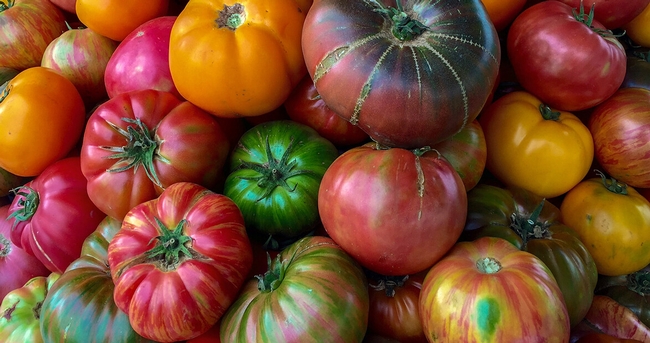Spring is around the corner, which means it is time to plant. Starting from seed can be a gratifying and economical way to grow many edibles and ornamentals, but choosing seeds can be confusing. Do you want a black tomato or a striped tomato? Organic? Heirloom? Hybrid? What is the difference?
Heirloom tomatoes. Kim Schwind
Heirloom varieties must be open pollinated, meaning that pollination occurs naturally by insect, bird, wind, or animal. Seed produced by the heirloom variety will grow true to type (it will resemble the parent plant) as long as the flowers were pollinated by the same variety. Open pollination creates a more genetically diverse gene pool which allows plants to slowly adapt to local growing conditions.
Heirloom Di Ciccio broccoli. Jeanette Alosi
Hybrids should not be confused with Genetically Modified Organisms, or GMO's. GMOs are created by inserting genes from one species into an unrelated species. Some of these combinations might seem like creations of science fiction! Although never commercialized, tomato was experimentally modified with genetic material from fish to improve frost tolerance. On the other hand, papaya genetically modified with a viral protein saved the Hawaiian papaya industry from papaya ringspot, a devastating virus disease.
Early girl hybrid tomato growing on the right. Laura Lukes
UC Master Gardeners of Butte County are part of the University of California Cooperative Extension (UCCE) system. To learn more about us and our upcoming events, and for help with gardening in our area, visit our website. If you have a gardening question or problem, email the Hotline at mgbutte@ucanr.edu or leave a phone message on our Hotline at (530) 538-7201. To speak to a Master Gardener about a gardening issue, or to drop by the MG office during Hotline hours, see the most current information on our Ask Us section of our website.





